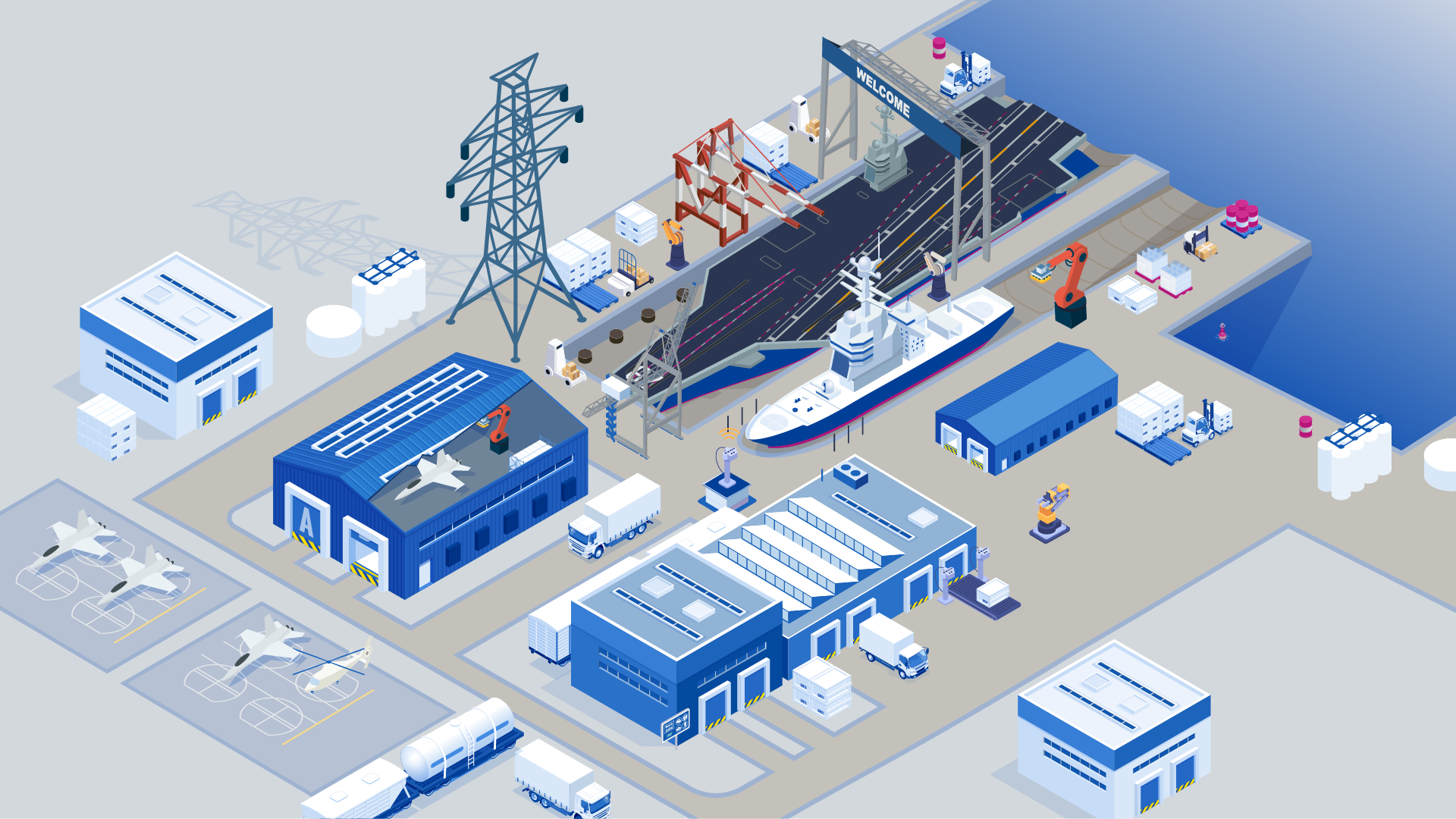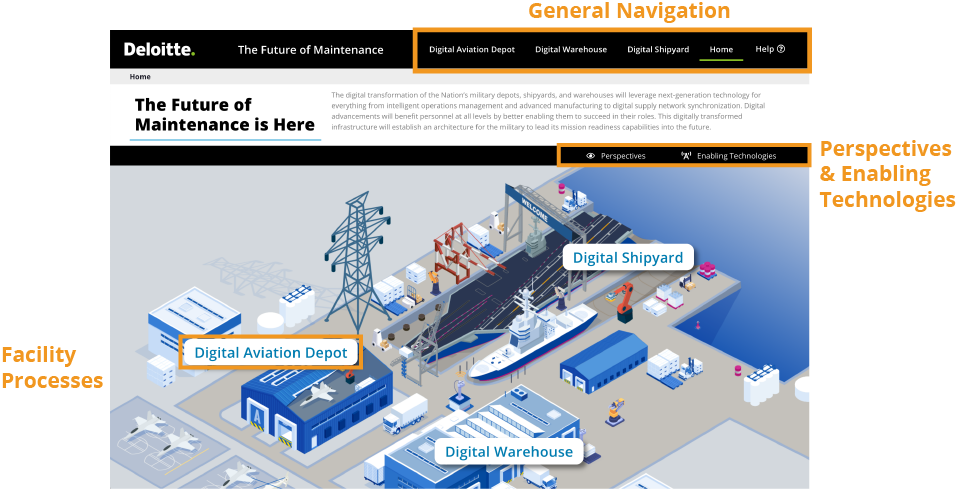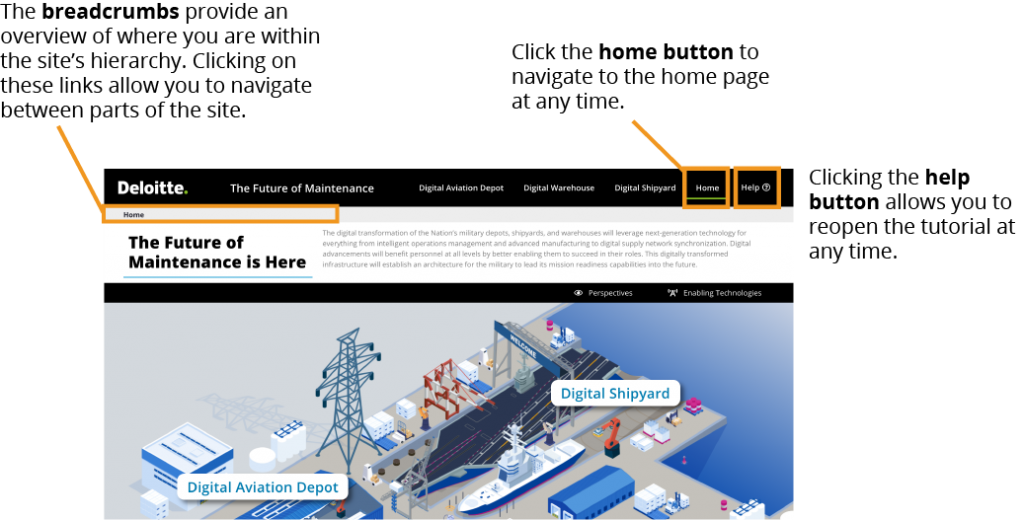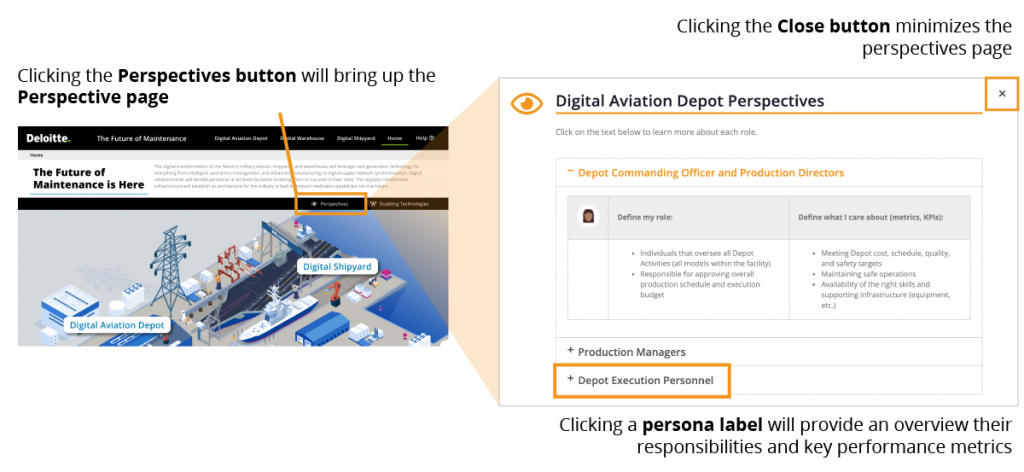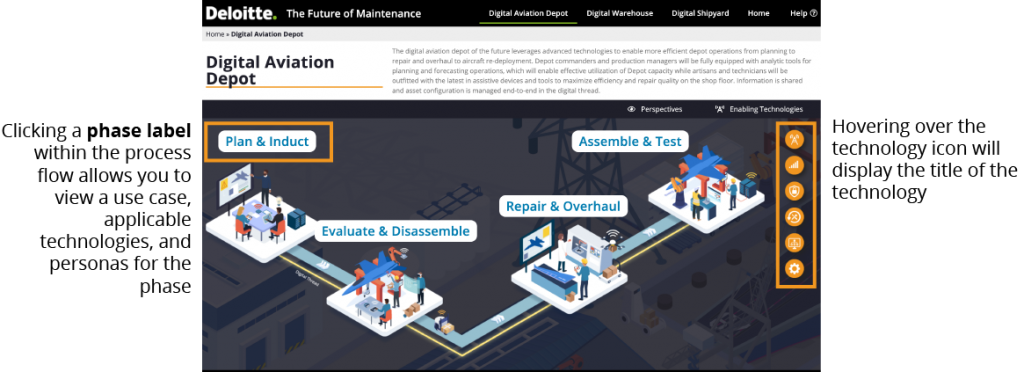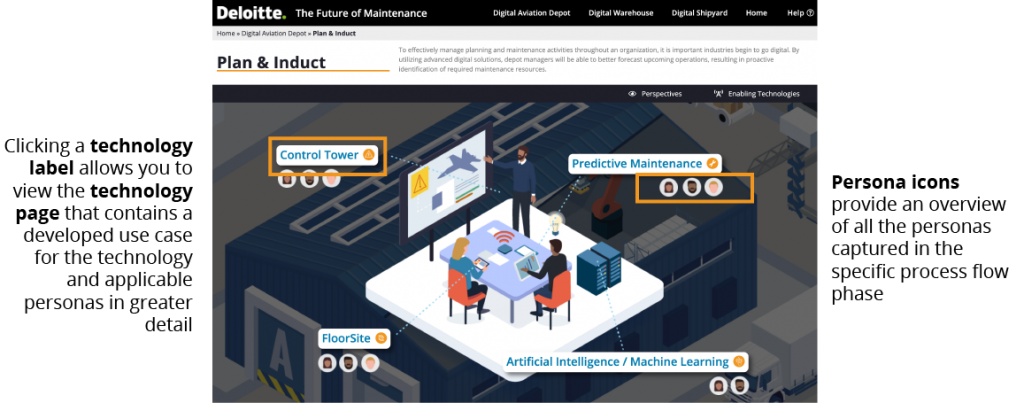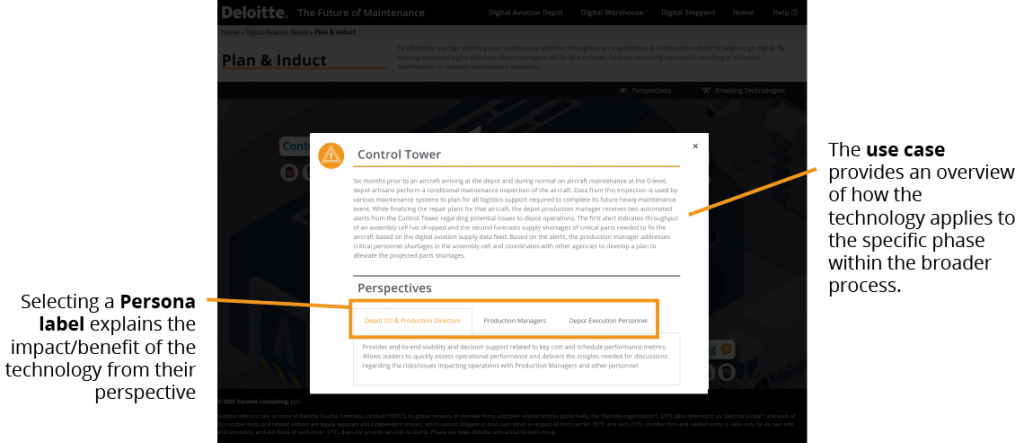The Future of Maintenance is Here
The digital transformation of the Nation’s military depots, shipyards, and warehouses will leverage next-generation technology for everything from intelligent operations management and advanced manufacturing to digital supply network synchronization. Digital advancements will benefit personnel at all levels by better enabling them to succeed in their roles. This digitally transformed infrastructure will establish an architecture for the military to lead its mission readiness capabilities into the future.
